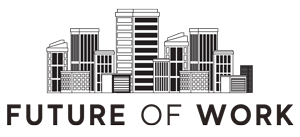As the new year approaches, the call centre industry is bracing for significant changes driven by advancements in artificial intelligence (AI), shifting customer expectations, and evolving workplace dynamics.
Ben Booth, CEO and Founder of MaxContact, has outlined the key trends and challenges call centres can expect in 2025, offering insights on how businesses can adapt to these transformations effectively.
AI Evolution: From Broad Models to Targeted Solutions
AI has been a growing presence in call centres, with tools like ChatGPT accelerating its adoption. However, Booth highlights that early implementations have often fallen short of their promised efficiencies. While AI has improved resource utilisation by 20–30%, the marketed figures of 70–80% efficiency remain elusive.
In 2025, Booth anticipates a shift towards smaller, domain-specific AI models designed to deliver measurable returns on investment. These targeted solutions are expected to enhance personalisation, enable real-time language translation, and introduce accent modification—key tools for understanding diverse customer bases. The focus will move away from broad, general-purpose models to technologies tailored to specific business needs.
Strengthening Security and Compliance
With the growing reliance on AI, data security and compliance will take centre stage. Call centres handle vast amounts of sensitive customer data, and Booth predicts that 2025 will bring stricter measures to ensure its protection. Safeguarding vulnerable customers from exploitation by emerging technologies will also become a priority.
Booth notes that call centres must bolster their defences to maintain customer trust while meeting regulatory requirements. As global incidents of data breaches and cyber threats continue to rise, security and compliance will be critical areas of focus in the coming year.
Refining Hybrid Work Models
The post-pandemic rise of remote and hybrid work has reshaped the call centre workforce. While these models offer flexibility and cost savings, they also present challenges, such as maintaining team cohesion and ensuring effective onboarding.
Booth stresses that refining hybrid work policies will be a key priority for 2025. By implementing technologies that facilitate seamless remote operations and fostering engagement among dispersed teams, businesses can ensure hybrid models remain viable and beneficial for both employees and employers.
Enhancing Efficiency Amid Economic Pressure
Economic challenges, including rising operational costs and Labour’s autumn budget measures, are pushing call centres to do more with fewer resources. Many businesses currently rely on separate systems for different communication channels, which increases costs and reduces efficiency.
Booth predicts a trend towards integrated reporting suites and the adoption of pragmatic technologies like speech analytics. These tools will streamline operations, enabling agents to focus on strategic tasks and improving overall efficiency. Technologies that aid in tasks such as note-taking and action planning will also become more widespread, helping call centres adapt to financial pressures.
Improving Customer Personalisation
Despite advancements in AI, customer satisfaction has been declining, potentially due to the lack of human empathy in interactions. Booth foresees a renewed focus on personalisation in 2025, leveraging AI to gain deeper insights into customer needs while respecting privacy.
Integrating multiple data sources will allow call centres to better understand customer behaviours and preferences, enabling tailored interactions. This approach is expected to bridge the gap between technological efficiency and the human touch that customers increasingly value.
Metrics and Performance Monitoring
Traditional methods of gathering performance metrics have proven inadequate for tracking complex customer journeys across multiple channels. Booth anticipates that AI-driven tools like speech analytics will gain traction, consolidating data and improving personalisation and efficiency.
Current agent performance metrics, such as a 27% success rate on first-call leads and an average of 65.5 calls per day, have room for improvement. Better metrics and tools could significantly enhance these figures in the coming year.
Economic pressures and policy changes, including increased national insurance contributions and rising minimum wages, will create additional challenges for the sector. Booth suggests that call centres may explore offshoring or prioritising higher-skilled roles to offset costs and maintain competitiveness.






